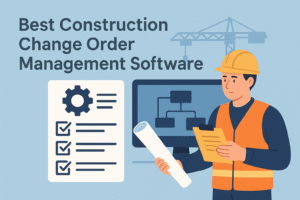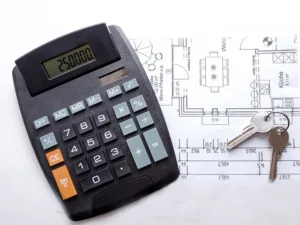Building a home is a significant milestone in many people’s lives, but it can also be a complex and challenging process. With so many decisions and factors to consider, it’s easy to make mistakes that could jeopardize your dream home’s success. As a prospective homeowner, you must be well-informed and prepared to navigate this journey smoothly. In this article, we will explore the top 10 mistakes to avoid when building a home, arming you with the knowledge and insights needed to ensure a successful outcome. By learning from these common pitfalls, you can confidently embark on your own home-building adventure with a clear vision and a solid plan that sets the foundation for the perfect sanctuary you’ve always envisioned.
Table of Contents
Mistake 1: Inadequate planning
Embarking on the journey of building a home without a comprehensive plan is like setting sail without a compass. A well-thought-out plan serves as a roadmap, guiding you through each phase of the construction process and helping to ensure that your vision of dream house becomes a reality. Unfortunately, many people underestimate the importance of thorough planning, leading to costly mistakes, delays, and even disappointment with the final result.
To avoid falling into this trap, dedicate time and effort to establish a detailed design, budget, and timeline before breaking ground. Begin by outlining your goals and priorities, such as the desired size and layout of your home, as well as any specific features or customizations you’d like to incorporate. Consulting with architects, interior designers and, and builders during this stage can provide valuable insights and help you refine your vision.
Next, create a realistic budget for all construction costs, including materials, labor, permits, and potential contingencies. It’s crucial to have a clear understanding of your financial limitations to avoid overspending or making compromises that could impact the quality or functionality of your home.
Finally, establish a timeline that includes all stages of the construction process, from obtaining permits to the final walkthrough. Remember that unexpected delays can occur, so it’s wise to build some flexibility into your schedule. Regularly reviewing and updating your plan throughout the project will help you stay on track and make any necessary adjustments.
By investing time and effort into thorough planning, you’ll be better equipped to confidently navigate the home-building process, ultimately bringing your dream home to life while minimizing potential pitfalls.
Mistake 2: Choosing the wrong builder
Selecting the right builder is one of the most critical decisions you’ll make when building your dream home. A skilled and reputable builder can bring your vision to life, while a poor choice could lead to subpar quality, delays, and even financial losses. Conducting thorough research and vetting potential builders carefully is essential to prevent this costly mistake.
1. Seek recommendations
Start your search by asking friends, family, or colleagues for referrals or searching online for highly-rated local builders. Reading reviews and testimonials can provide valuable insights into the experiences of past clients.
2. Verify credentials
Once you have a list of potential builders, check their credentials, such as licenses, insurance, and memberships with professional associations. These indicators demonstrate that the builder is reputable and committed to maintaining industry standards.
3. Review their portfolio
Evaluate home builders” portfolios to determine if their style and quality of work align with your vision. Visiting completed projects or model homes can also give you a sense of the builder’s craftsmanship and attention to detail.
4. Request quotes and compare
Obtain detailed quotes from multiple builders, ensuring that all costs, timelines, and project specifications are clearly outlined. Comparing quotes will help you identify discrepancies and make an informed decision based on value rather than simply the lowest price.
5. Check references
Contact past clients to discuss their experiences working with the builder. Ask about their satisfaction with the final product, communication, and adherence to timelines and budgets.
6. Assess communication skills
Establishing open lines of communication with your builder is crucial. Choose a builder who is responsive, attentive, and genuinely interested in your project’s success.
By taking the time to research and select the right home builder, you’ll increase your chances of having a positive home-building experience, resulting in a finished product that meets your expectations and stands the test of time.
Mistake 3: Ignoring energy efficiency
In today’s eco-conscious world, incorporating energy efficiency into your new home’s design isn’t just a responsible choice – it’s also a wise investment. Energy-efficient homes not only reduce your environmental footprint but can also save you money on utility bills and boost your property’s resale value. Unfortunately, some homeowners overlook this crucial aspect when building their dream home, leading to missed opportunities for long-term benefits. To ensure your new home is optimized for energy efficiency, consider the tips:
1. Insulation and air sealing
A well-insulated home is key to maintaining comfortable temperatures year-round while reducing energy consumption. Invest in high-quality insulation materials and ensure proper air sealing to minimize drafts and heat loss.
2. Energy-efficient windows
Windows play a significant role in your home’s overall energy efficiency. Opt for double or triple-pane windows with low-E coatings to reduce heat transfer and improve insulation.
3. Heating and cooling systems
Choose energy-efficient HVAC systems with high SEER and AFUE ratings, consuming less energy while providing optimal comfort. Also, consider installing programmable thermostats to automate temperature settings and reduce energy usage.
4. Energy-saving appliances
Select ENERGY STAR-certified appliances, such as refrigerators, dishwashers, and washing machines, which consume less energy and water, helping to lower your utility bills.
5. Solar panels
Installing solar panels can significantly reduce your reliance on grid electricity and lower your energy costs. Solar panels can also be a wise financial investment depending on your location and local incentives.
6. Water conservation
Implement water-saving features, such as low-flow faucets, showerheads, and toilets, to conserve water and reduce your water bill.
7. Passive design principles
Incorporate passive design elements, such as strategic window placement, natural ventilation, and shading devices, to harness natural light and air circulation for improved energy efficiency.
By prioritizing energy efficiency when building your home, you’ll contribute to a more sustainable future and enjoy the financial benefits of lower utility bills and increased property value.
Mistake 4: Overlooking local building codes and regulations
Adhering to local building codes and regulations is not only a legal requirement but also a crucial step in ensuring your home is safe and structurally sound. Failing to comply with these rules can result in costly fines, delays, or even the need to modify or demolish completed work. To avoid the pitfalls of overlooking local building codes and regulations, consider these strategies:
1. Familiarize yourself with local codes
Begin by familiarizing yourself with the building codes and zoning laws applicable to your specific location. These regulations cover various aspects, such as structural requirements, electrical systems, plumbing, and setbacks from property lines.
2. Consult with experts
Engage with professionals, such as architects, engineers, and builders, who have experience working in your area and are well-versed in local building codes. They can help ensure that your design and construction plans adhere to the necessary regulations.
3. Obtain required permits
Before starting construction, apply for and obtain all the necessary permits from your local building department. Depending on your project’s scope and complexity, this may include building, electrical, plumbing, and other specialized permits.
4. Schedule inspections
Throughout the construction process, arrange for periodic inspections by local building officials to verify that your home is being built according to code. This will help identify and address potential issues early, minimizing disruptions and delays.
5. Stay updated on changes
Building codes and regulations can change over time, so staying informed about any updates or amendments that may affect your project is essential. Regularly checking in with your local building department or consulting with your building team can help ensure you remain compliant.
By paying close attention to local building codes and regulations, you’ll not only avoid potential legal and financial repercussions but also ensure your home is constructed safely, providing a secure and comfortable environment for you and your family.
Mistake 5: Skimping on quality materials
When building a home, seeking ways to minimize costs is natural. However, cutting corners on quality materials can be a shortsighted decision that could lead to higher maintenance and repair expenses in the long run. A well-built home using high-quality materials will not only withstand the test of time but also provide a more comfortable and safe living environment. To avoid the pitfalls of skimping on quality materials, consider the following tips:
1. Prioritize essential components
Focus on investing in high-quality materials for critical aspects of your home, such as the foundation, roofing, insulation, and structural elements. These components significantly impact your home’s durability, energy efficiency, and overall performance.
2. Strike a balance
While it’s important to prioritize quality, it’s also essential to strike a balance between cost and performance. For example, you might choose to invest in premium materials for high-traffic areas, like kitchen countertops and flooring, while opting for more budget-friendly options in less frequented spaces.
3. Research and compare options
Take the time to research various materials and their associated benefits, drawbacks, and costs. By comparing different options, you’ll be better equipped to decide which materials best suit your needs and budget.
4. Consult with professionals
Seek advice from your builder, architect, or interior designer when selecting materials, as they can provide valuable insights based on their experience and expertise. They can help you identify the best quality materials within your budget and offer guidance on where to invest and save.
5. Beware of false economies:
While some low-cost materials may seem like a bargain initially, they can cost you more in the long run if they require frequent repairs or replacements. Opt for materials that offer a balance of affordability and longevity, ensuring your home remains in good condition for years to come.
By investing in quality materials, you’ll not only enhance your home’s durability and performance but also create a more enjoyable living space that retains its value over time.
Mistake 6: Inadequate communication with the builder
Maintaining clear and open lines of communication with your builder is essential for a successful home-building experience. Inadequate communication can lead to misunderstandings, delays, and dissatisfaction with the final result. To ensure that your vision is accurately translated into reality and any concerns or changes are promptly addressed, consider the following tips for fostering effective communication with your builder:
1. Establish expectations:
At the outset of your project, have a frank discussion with your builder about your expectations regarding communication. Determine the preferred contact methods, frequency of updates, and the best time to reach them for any questions or concerns.
2. Schedule regular meetings:
Arrange regular meetings, either in-person or via video conferencing, to discuss progress, address any issues, and make decisions regarding materials, finishes, and other aspects of the project. These meetings help keep the project on track and ensure that both parties are on the same page.
3. Be clear and concise
When communicating with your custom home builder, always strive to be clear and concise in your requests and concerns. This will help minimize misunderstandings and ensure your needs are accurately conveyed and understood.
4. Encourage open dialogue
Foster an environment where both parties feel comfortable sharing their thoughts, ideas, and concerns. Encourage your builder to be honest about any potential challenges or issues that may arise during the construction process so that they can be addressed promptly and effectively.
5. Document discussions and decisions
Keep a record of all communications with your builder, including meeting notes, emails, and texts. This documentation can serve as a valuable reference if future disputes or misunderstandings arise.
By establishing and maintaining open and effective communication with your builder, you’ll be better positioned to navigate the home-building process smoothly and ensure your dream home is built to your satisfaction.
Mistake 7: Failing to consider future needs and lifestyle changes
When building a home, it’s crucial to think beyond your immediate needs and consider how your lifestyle may evolve. Designing a home that can adapt to your changing circumstances will help ensure it remains functional and comfortable for years to come. To create a home that accommodates future needs and lifestyle changes, consider the following tips:
1. Plan for family growth
If you anticipate your family growing in the future, ensure your home has enough bedrooms and living spaces to accommodate additional members. Designing with this in mind will save you the stress of needing to move or undergo costly renovations later.
2. Incorporate aging-in-place features
Design your home with aging-in-place principles, such as wider doorways, a walk-in shower, or a bedroom on the ground floor, to ensure it remains accessible and safe as you age.
3. Flexible spaces
Incorporate versatile spaces that can serve multiple purposes or be easily repurposed as your needs change. For example, a home office could double as a guest bedroom, or a playroom could transition into a hobby room or additional living space.
4. Opt for energy-efficient upgrades
As energy costs continue to rise, investing in energy-efficient upgrades, such as solar panels, insulation, or energy-efficient appliances, will not only save you money but also help future-proof your home.
5. Plan for potential income opportunities
If you foresee the need for additional income in the future, consider designing your home with features that can be easily converted into rental spaces, such as a basement apartment or an accessory dwelling unit (ADU).
By taking the time to consider your future needs and lifestyle changes, you’ll create a home that remains functional, comfortable, and relevant for years to come, ultimately saving you time and money in the long run.
Mistake 8: Neglecting the resale value
While building your dream home, focusing on personal preferences and requirements is natural. However, it’s essential not to lose sight of your home’s future resale value. Even if you don’t plan to sell your home anytime soon, circumstances can change, and it’s wise to make design and construction decisions that will appeal to potential buyers. To ensure your home retains its value and marketability, consider the following tips:
1. Avoid extreme customization
While creating a space that reflects your tastes and lifestyle is important, avoid making overly personalized or unconventional design choices that may deter potential buyers. Strive for a balance between customization and practicality, ensuring your home caters to a broader audience.
2. Consider location and neighborhood
When selecting a lot for your home, consider factors such as proximity to schools, parks, shopping centers, and transportation options. A desirable location will not only enhance your quality of life but also contribute to your home’s long-term value.
3. Invest in curb appeal
The exterior of your home plays a significant role in making a solid first impression on potential buyers. Invest in quality landscaping, well-maintained pathways, and an attractive façade to create a welcoming and appealing exterior.
4. Prioritize functional layout
A valuable and practical floor plan is a critical factor that buyers consider when evaluating a home. Ensure that your home’s layout is efficient, with ample storage, well-proportioned rooms, and a natural flow between spaces.
5. Choose timeless finishes and fixtures
Opt for classic and high-quality finishes and fixtures that will stand the test of time in terms of durability and style. This will help your home maintain its appeal to potential buyers in the years to come.
By keeping future resale value in mind while building your home, you’ll create a space that caters to your needs and ensure that your investment retains its worth should you decide to sell in the future.
Mistake 9: Focusing too much on aesthetics and neglecting functionality
While the visual appeal of your home is undeniably essential, focusing solely on aesthetics can lead to overlooking crucial functional aspects. A well-designed house should strike a balance between style and practicality, ensuring it looks beautiful and meets your daily needs. To avoid the mistake of prioritizing aesthetics over functionality, consider the following tips:
1. Assess your lifestyle
Begin by assessing your lifestyle and daily routines to identify your specific functional requirements. Consider factors such as family size, hobbies, work-from-home needs, and entertainment preferences to inform your home’s design and layout.
2. Optimize storage
Adequate storage is essential for maintaining a clutter-free and organized home. Ensure your design includes ample storage solutions, such as built-in closets, cabinetry, and shelving, to accommodate your belongings.
3. Focus on room flow and layout
A well-planned layout is key to a functional home. Ensure that your design allows for easy movement between spaces and caters to the natural flow of daily activities, such as cooking, dining, and relaxing.
4. Choose durable and low-maintenance materials
Select materials and finishes that look good and are easy to maintain and built to last. This will save you time and money on upkeep while ensuring your home continues to look its best.
5. Consult with professionals
Engage with architects, designers, and builders to help strike the right balance between aesthetics and functionality. Their expertise can guide you in making informed decisions that cater to both aspects of your home’s design.
By giving equal importance to aesthetics and functionality, you’ll create a home that looks stunning and serves as a comfortable and practical living space tailored to your unique needs and lifestyle.
Mistake 10: Not setting a realistic budget
Establishing a realistic budget is one of the most critical aspects of building a home. Underestimating costs or failing to account for unexpected expenses can result in financial strain and potentially compromise the quality of your home. To avoid this mistake and ensure a smooth construction process, consider the following tips for setting a realistic budget:
1. Research and estimate costs
Begin by researching the costs associated with building a home in your area, including materials, labor, permits, and other fees. This will help you establish a baseline estimate for your project and understand the financial implications involved.
2. Include a contingency fund
Unexpected expenses are inevitable when building a home. Set aside a contingency fund of around 10-15% of your total budget to cover any unforeseen costs, such as material price increases, weather-related delays, or changes to your design.
3. Prioritize your spending
Determine which aspects of your home are most important to you and prioritize your spending accordingly. This will help ensure that your budget is allocated effectively and you get the most value from your investment.
4. Track your spending
Throughout the construction process, keep a close eye on your spending and compare it to your initial budget. Regularly monitoring your expenses will help you identify potential issues early on and make necessary adjustments to stay on track.
5. Consult with professionals
Seek the advice of professionals, such as builders, architects, and financial advisors, to help you establish a realistic budget and navigate the financial aspects of your project. Their expertise can prove invaluable in ensuring your budget is accurate and feasible.
By setting a realistic budget and diligently monitoring your spending, you can minimize financial stress and ensure that your dream home is built without compromising quality or your financial well-being.
Conclusion
In conclusion, building a home is an exciting and rewarding journey that requires careful planning, consideration, and attention to detail. By being aware of these top 10 common mistakes and taking the necessary steps to avoid them, you can confidently navigate the home-building process and create a beautiful, functional, and enduring living space that caters to your unique needs and preferences. Remember that consulting with experienced professionals, setting realistic expectations, and maintaining open communication is critical to ensuring a successful and enjoyable home-building experience. With the right approach, your dream home can become a reality that you and your family will cherish for years to come.
Related posts
Read our other articles where you can find useful and relevant information about building your own home:
About the Author

Mikk Ilumaa
Mikk Ilumaa is the CEO of Bauwise, a leader in construction financial management software with over ten years of experience in the construction software industry. At the helm of Bauwise, Mikk leverages his extensive background in developing construction management solutions to drive innovation and efficiency. His commitment to enhancing the construction process through technology makes him a pivotal figure in the industry, guiding Bauwise toward setting new standards in construction financial management. View profile






